Background
David Morgan was born on December 21, 1957, in Iowa, United States, to Lowell and Rosella Morgan.

901 8th St S, Moorhead, MN 56562, United States
David Morgan studied at Concordia College.
Tucson, AZ 85721, United States
Morgan studied at the University of Arizona.
5801 S Ellis Ave, Chicago, IL 60637, United States
Morgan studied at the University of Chicago.
David Morgan
David Morgan
David Morgan
David Morgan








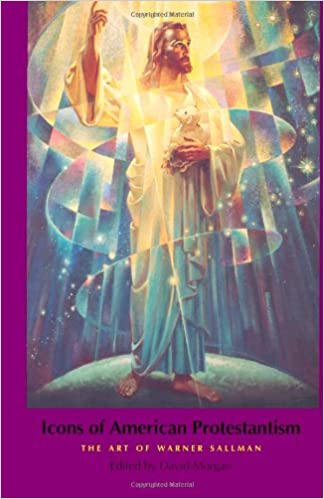
(Although American Protestants often claim that they are o...)
Although American Protestants often claim that they are opposed to the use of devotional images in their religious life, they in fact draw on a vast body of religious icons to disseminate confessional views, to teach, and to celebrate birthdays, baptisms, confirmations, and sacred holidays. This fascinating book focuses on the production, marketing, and reception of one such set of religious illustrations, the art of Warner Sallman (1892-1968), whose 1940 Head of Christ has been reproduced an estimated five hundred million times.
https://www.amazon.com/gp/product/0300063423/ref=dbs_a_def_rwt_bibl_vppi_i11
1996
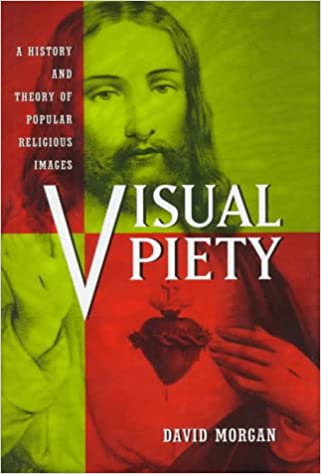
(This fascinating study of devotional images traces their ...)
This fascinating study of devotional images traces their historical links to important strains of American culture. David Morgan demonstrates how popular visual images—from Warner Sallman's "Head of Christ" to velvet renditions of DaVinci's "Last Supper" to illustrations on prayer cards—have assumed central roles in contemporary American lives and communities.
https://www.amazon.com/gp/product/0520209788/ref=dbs_a_def_rwt_bibl_vppi_i10
1998
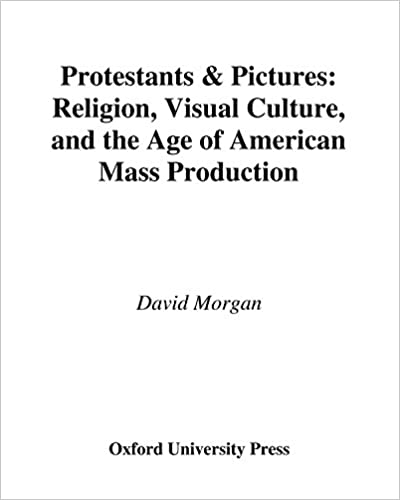
(In this lavishly illustrated book, David Morgan surveys t...)
In this lavishly illustrated book, David Morgan surveys the visual culture that shaped American Protestantism in the nineteenth and twentieth centuries--a vast record of images in illustrated bibles, Christian almanacs, children's literature, popular religious books, charts, broadsides, Sunday school cards, illuminated devotional items, tracts, chromos, and engravings.
https://www.amazon.com/gp/product/B00WA22M20/ref=dbs_a_def_rwt_hsch_vapi_tkin_p1_i4
1999

(Contemporary artists have often clashed with conservative...)
Contemporary artists have often clashed with conservative American evangelicals in recent years, giving the impression that art and religion are fundamentally at odds. Yet historically, artistic images have played a profound role in American religious life. This superb collection of essays, with its unique assembly of images, challenges the apparent tension between religion and the arts by illustrating and investigating their long-standing and intriguing relationship from the early nineteenth century to the present day.
https://www.amazon.com/gp/product/0520225228/ref=dbs_a_def_rwt_bibl_vppi_i8
2001
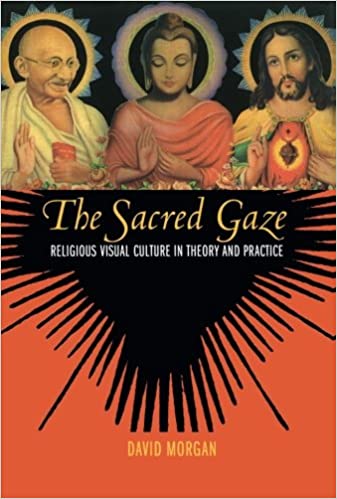
(The Sacred Gaze discusses the religious functions of imag...)
The Sacred Gaze discusses the religious functions of images and the tools viewers use to interpret them. Morgan questions how fear and disgust of images relate to one another and explains how scholars study the long and evolving histories of images as they pass from culture to culture. An intriguing strand of the narrative details how images have helped to shape popular conceptions of gender and masculinity. The opening chapter considers definitions of "visual culture" and how these relate to the traditional practice of art history.
https://www.amazon.com/gp/product/0520243064/ref=dbs_a_def_rwt_bibl_vppi_i9
2005
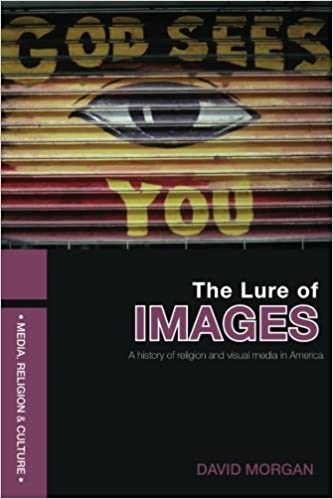
(This is the history of the relationship between mass prod...)
This is the history of the relationship between mass produced visual media and religion in the United States. It is a journey from the 1780s to the present - from early evangelical tracts to teenage witches and televangelists, and from illustrated books to contemporary cinema.
https://www.amazon.com/gp/product/0415409152/ref=dbs_a_def_rwt_bibl_vppi_i12
2007
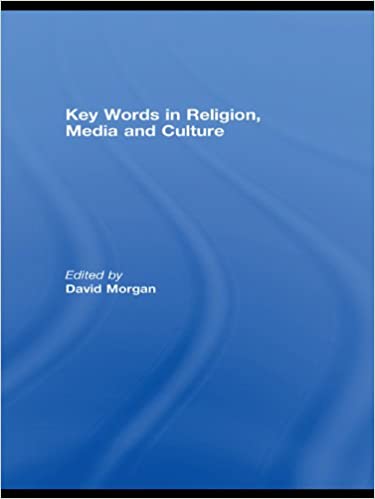
(This volume is a major intervention in the literature on ...)
This volume is a major intervention in the literature on religion, media and culture. Drawing together leading international scholars, it offers a conceptual map of the field to which students, teachers and researchers will refer for many years to come. The publication of Key Words in Religion, Media and Culture is a significant moment in the formation of this area of study, and sets a standard for cross-disciplinary collaboration and theoretical and methodological sophistication for future work in this area to follow.
https://www.amazon.com/gp/product/B001PC9ZDU/ref=dbs_a_def_rwt_hsch_vapi_tkin_p1_i1
2008

(The near-absence of religion from contemporary discourse ...)
The near-absence of religion from contemporary discourse on art is one of the most fundamental issues in postmodernism. Artists critical of religion can find voices in the art world, but religion itself, including spirituality, is taken to be excluded by the very project of modernism.
https://www.amazon.com/gp/product/B001OLRO76/ref=dbs_a_def_rwt_hsch_vapi_tkin_p1_i2
2008
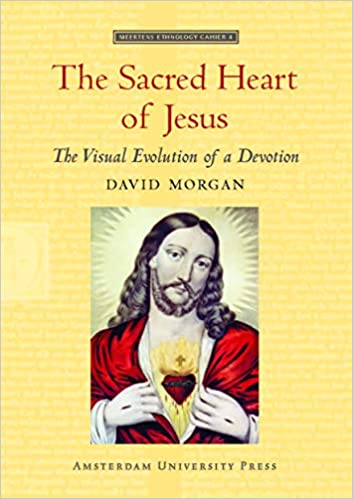
(Devotion to the Sacred Heart of Jesus has been controvers...)
Devotion to the Sacred Heart of Jesus has been controversial from its beginning in the life of the French Visitationist nun Margaret Mary Alacoque (1647-1690), who established the devotion after a series of mystical visions of Christ. Under the leadership of Sister Sophie Barat, founder of the Society of the Sacred Heart in 1800, the devotion was taken around the world in the course of the nineteenth century.
https://www.amazon.com/gp/product/9089640193/ref=dbs_a_def_rwt_bibl_vppi_i13
2008
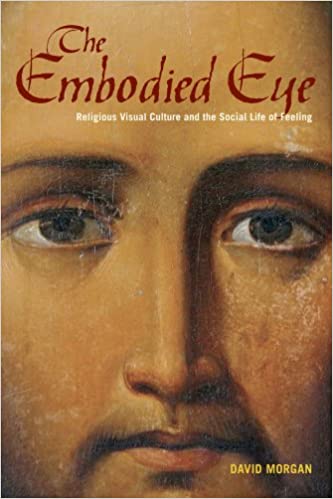
(David Morgan builds on his previous groundbreaking work t...)
David Morgan builds on his previous groundbreaking work to offer this new, systematically integrated theory of the study of religion as visual culture. Providing key tools for scholars across disciplines studying the materiality of religions, Morgan gives an accessibly written theoretical overview including case studies of the ways seeing is related to touching, hearing, feeling, and such ephemeral experiences as dreams, imagination, and visions.
https://www.amazon.com/gp/product/0520272234/ref=dbs_a_def_rwt_bibl_vppi_i6
2012
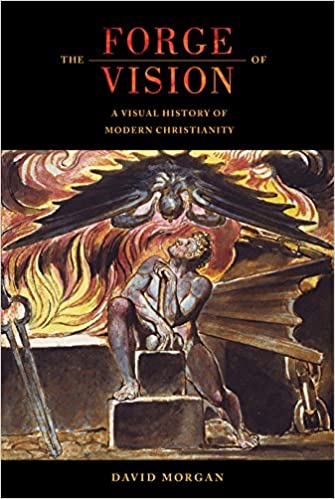
(The Forge of Vision tells the history of Christianity fro...)
The Forge of Vision tells the history of Christianity from the sixteenth century through the present by selecting the visual themes of faith that have profoundly influenced its development. After exploring how distinctive Catholic and Protestant visual cultures emerged in the early modern period, Morgan examines a variety of Christian visual practices, ranging from the imagination, visions of nationhood, the likeness of Jesus, the material life of words, and the role of modern art as a spiritual quest, to the importance of images for education, devotion, worship, and domestic life.
https://www.amazon.com/gp/product/B011PYOJS8/ref=dbs_a_def_rwt_hsch_vapi_tkin_p1_i3
2015

(Cameron Morgan led a sheltered life. Sheltered from bulli...)
Cameron Morgan led a sheltered life. Sheltered from bullies by being homeschooled. Sheltered from bad influences by living so far off the beaten path the Google Street View of his house was a No Trespassing sign. All Cameron wanted was to be a normal kid doing normal kid stuff. Normal is a relative term. Cameron's relatives, the ones he didn't know about, were as far from normal as you can get. Ironically it was a trip to the shelter that started Cameron on his journey of discovering how epically unnormal he was
https://www.amazon.com/gp/product/B07TSG57PK/ref=dbs_a_def_rwt_hsch_vapi_tkin_p1_i5
2019
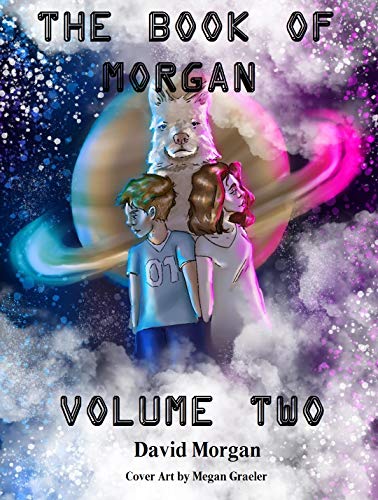
(Cameron wanted to be a normal kid, leading a normal life....)
Cameron wanted to be a normal kid, leading a normal life. After finding out he was heir to the throne of a galaxy far far away, he’d settle for being allowed to play football, getting to know his newly found brother and not being skewered by the poison point on an evil space unicorn.
https://www.amazon.com/gp/product/B0878WYJM4/ref=dbs_a_def_rwt_hsch_vapi_tkin_p1_i0
2020
David Morgan was born on December 21, 1957, in Iowa, United States, to Lowell and Rosella Morgan.
In 1980, David Morgan received a Bachelor of Arts from Concordia College. In 1984, he also received a Master of Arts from the University of Arizona, and a Ph.D. from the University of Chicago in 1990.
David Morgan taught art history for many years at Valparaiso University, where he was Duesenberg Professor in Christianity and the Arts. At Duke, he has served as Director of the Graduate Program in Religion before serving as Chair of the Department of Religious Studies from 2013 to 2019.
Morgan has published several books and dozens of essays on the history of religious visual culture, fine art, and art theory. He is currently at work on a new book under contract with the University of North Carolina Press, entitled "The Thing about Religion: An Introduction to the Material Study of Religions."
Morgan is also a co-founder and co-editor of the international scholarly journal, Material Religion, and co-editor of a book series entitled "Bloomsbury Studies in Material Religion".
David Morgan is most commonly known as the author or editor of a number of books on religious visual culture, fine art, and art theory, such as The Forge of Vision: A Visual History of Modern Christianity, Images at Work: The Material Culture of Enchantment, The Embodied Eye: Religious Visual Culture and the Social Life of Feeling and others. He contributed to Religion and Material Culture: The Matter of Belief, a collection of essays by fifteen authors from around the world who investigate the relevance of materiality for understanding belief.
In 1999, David Morgan received an Award in philosophy and religion from the Professional-Scholarly Publishing Division, Association of American Publishers, for Protestants and Pictures.
(In this lavishly illustrated book, David Morgan surveys t...)
1999(Although American Protestants often claim that they are o...)
1996(Devotion to the Sacred Heart of Jesus has been controvers...)
2008(The Forge of Vision tells the history of Christianity fro...)
2015(Contemporary artists have often clashed with conservative...)
2001(David Morgan builds on his previous groundbreaking work t...)
2012(The near-absence of religion from contemporary discourse ...)
2008(This fascinating study of devotional images traces their ...)
1998(This is the history of the relationship between mass prod...)
2007(The Sacred Gaze discusses the religious functions of imag...)
2005(This volume is a major intervention in the literature on ...)
2008(Cameron wanted to be a normal kid, leading a normal life....)
2020(Cameron Morgan led a sheltered life. Sheltered from bulli...)
2019Morgan is Lutheran. He says that religion is not a social activity that is immune to consumption. His research has sought to show how, in fact, religion thrives in modern mass culture in stark contrast to the claims that modernity is secular and inimical to religious belief. Religion is alive and well and popular religious visual practices are an important reason why. If historians of art and religion often used to avoid the study of popular imagery in the modern period, new generations of historians are finding rich opportunities for original research. This same scrutiny of patterns in popular reception has shaped Morgan's study of religious visual culture, by which he means both the images and the practices of using images. Whereas previous generations of scholars often found mass-produced artifacts worthy of contempt and happily dismissed them as 'kitsch,' growing numbers of scholars today consider mass-produced images and objects to be rich opportunities of understanding life in the modern world of consumption and commodification. People build and maintain their worlds in their routines of buying and disposing.
While teaching undergraduates, Morgan stumbled quite by accident onto a trove of popular religious art. The two mundane realities of the college classroom and mass-produced pictures that Christians display in everyday life quickly convinced him that writing about the ordinary was more promising than publishing long articles on recondite subjects in European intellectual history. He thinks, popular culture and religious imagery are subjects that repay the attention paid to them with enthusiastic public and academic audiences. Moreover, connections with adjacent areas of study are plentiful in the area of popular culture.
Morgan is a member of the American Academy of Religion, College Art Association, American Studies Association, Organization of American Historians, International Study Commission on Media, Religion, and Culture.
Morgan is married to Lorie Gieck. They have three children: Ashley, Benjamin and Peter.
